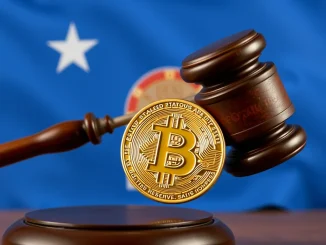
The world of finance is constantly evolving, and according to one of its most influential figures, a significant shift has already occurred. Kristalina Georgieva, the Managing Director of the International Monetary Fund (IMF), recently made a clear declaration: the digital currency era has officially arrived.
The Arrival of the Digital Currency Era
For years, discussions around cryptocurrencies, central bank digital currencies (CBDCs), and other forms of digital money have dominated headlines and policy debates. While some viewed them as niche technologies or future possibilities, Ms. Georgieva’s statement signals a recognition at the highest levels that digital currencies are no longer theoretical; they are a present reality impacting the global financial landscape.
This isn’t just about Bitcoin or Ethereum; it encompasses a broader spectrum, including stablecoins, potential CBDCs being explored by numerous countries, and other tokenized forms of value. Their increasing adoption, technological advancements, and integration into various aspects of the economy mean policymakers and financial institutions must now contend with their implications directly.
Why Risk Management is Now Paramount
With the arrival of this new era comes a fundamental challenge: how to effectively manage the associated risks. Ms. Georgieva explicitly stated that the focus must now shift from ‘if’ digital currencies will play a role to ‘how’ to mitigate their potential downsides. This underscores the urgency felt by global financial bodies like the IMF.
Think about it: introducing new forms of money and payment systems at scale without proper safeguards could introduce volatility, facilitate illicit activities, or even undermine traditional financial stability. Therefore, robust frameworks are needed to navigate this new terrain safely.
What Risks Concern the IMF?
The potential risks associated with digital currencies are multifaceted and require careful consideration. Some key areas of concern for the IMF and other regulators include:
- Financial Stability: Could the widespread use of certain digital currencies or assets create systemic risks? What happens during periods of high volatility? How do they interact with existing financial infrastructure?
- Consumer and Investor Protection: How can individuals be protected from fraud, scams, or loss of funds in a rapidly evolving digital asset space? Clear regulations and consumer education are vital.
- Illicit Finance: The pseudonymous or anonymous nature of some digital transactions raises concerns about money laundering, terrorist financing, and other illegal activities. Effective monitoring and enforcement mechanisms are necessary.
- Cybersecurity: Digital systems are vulnerable to hacks and technical failures. Ensuring the resilience and security of digital currency infrastructure is critical.
- Monetary Policy Transmission: How might the adoption of digital currencies, particularly foreign ones or private stablecoins, impact a country’s ability to conduct monetary policy?
Addressing these challenges through proactive risk management is essential to harnessing the potential benefits of digital innovation while safeguarding the financial system and its users.
Kristalina Georgieva’s Call to Action
Kristalina Georgieva‘s remarks serve as a call to action for policymakers, regulators, and the private sector globally. It’s not enough to simply observe the growth of digital currencies; concerted efforts are needed to establish clear rules of the road.
This involves international cooperation, as digital currencies often cross borders seamlessly. The IMF plays a crucial role in facilitating this dialogue and helping countries develop appropriate regulatory responses tailored to their specific circumstances while promoting a degree of global consistency.
Developing effective frameworks requires a deep understanding of the underlying technology, the economic implications, and the behavioral aspects of digital currency adoption. It’s a complex task that demands collaboration and a willingness to adapt as the technology and market evolve.
Ensuring Financial Stability in a Digital World
Ultimately, the goal is to ensure that the innovations of the digital currency era contribute positively to the global economy without compromising financial stability or consumer trust. This means finding a balance between fostering innovation and implementing necessary safeguards.
As Ms. Georgieva highlighted, the time for debate about arrival has passed. The focus is now firmly on the practical steps needed to manage the transition and integration of digital currencies into the mainstream financial system responsibly.
Summary: Navigating the Digital Currency Future
Kristalina Georgieva, the head of the IMF, has declared that the digital currency era is upon us. This pivotal moment shifts the global conversation towards the urgent need for robust risk management frameworks. Addressing potential threats to financial stability, consumer protection, and illicit finance is paramount. Ms. Georgieva’s message underscores that proactive, coordinated efforts are essential to safely navigate the complexities of this new financial landscape and harness the potential benefits of digital currencies while mitigating their significant risks.



